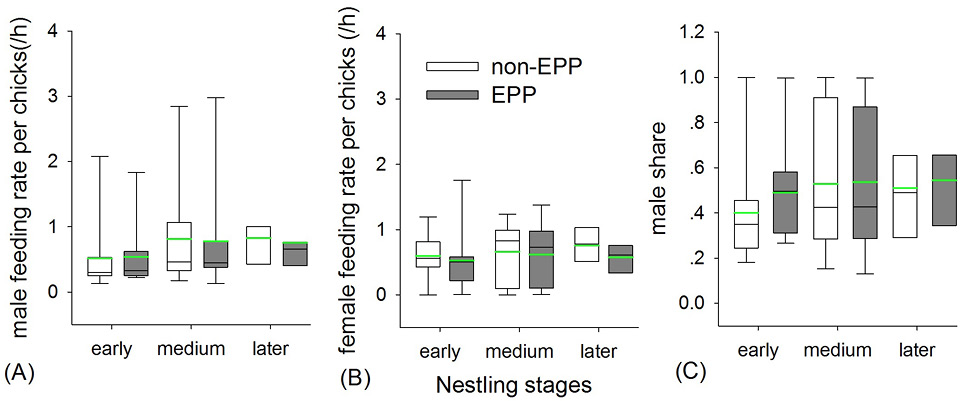Loss of Extra-pair Paternity is not Associated with Decreased Paternal Investment in Mixed-paternity Broods or Unrelated Nestlings in the Varied Tit, Parus varius
Loss of Extra-pair Paternity is not Associated with Decreased Paternal Investment in Mixed-paternity Broods or Unrelated Nestlings in the Varied Tit, Parus varius
Donglai Li1,Mei Han1,Huw Lloyd2, Linyu Jin1, Lei Zhang1, Jiangxia Yin1 and Dongmei Wan1*
Sex-specific social parental provisioning rates of adult varied tits directed towards broods in relation to EPP (sample sizes for early, medium and late nestling stages of non-EPP nests are 23, 24 and 18, and for EPP nests are 20, 18 and 13, respectively). Post hoc Tukey HSD tests show no significant differences in all values between EPP and non-EPP nests in each nestling stage (all p≥0.057). Boxplots and the whiskers show 25%, 75% and the 5%, 95% of the data, respectively. Black lines represent the median values and green lines the mean values.
Parental provisioning rates of varied tit toward individual chicks in relation to EPP (sample sizes for early, medium and late nestling stages are 9, 10 and 8 for both non-EPP and EPP nests). No significant differences between EPP and non-EPP group in each nestling stage (post-hoc Tukey HSD test (all p≥0.339). Boxplots and the whiskers show 25%, 75 % and the 5%, 95% of the data respectively. Black lines represent the median values and green lines the mean values.











